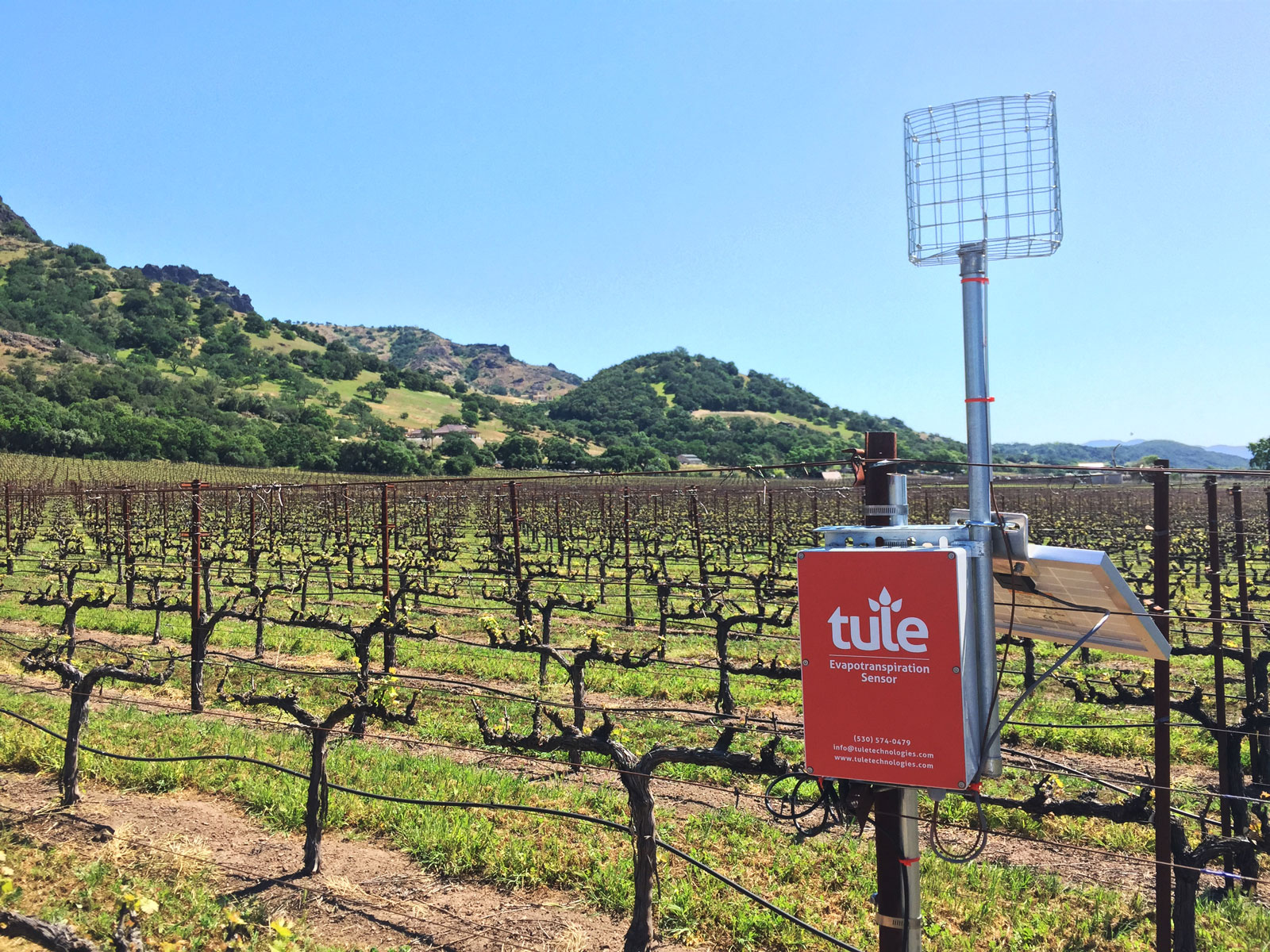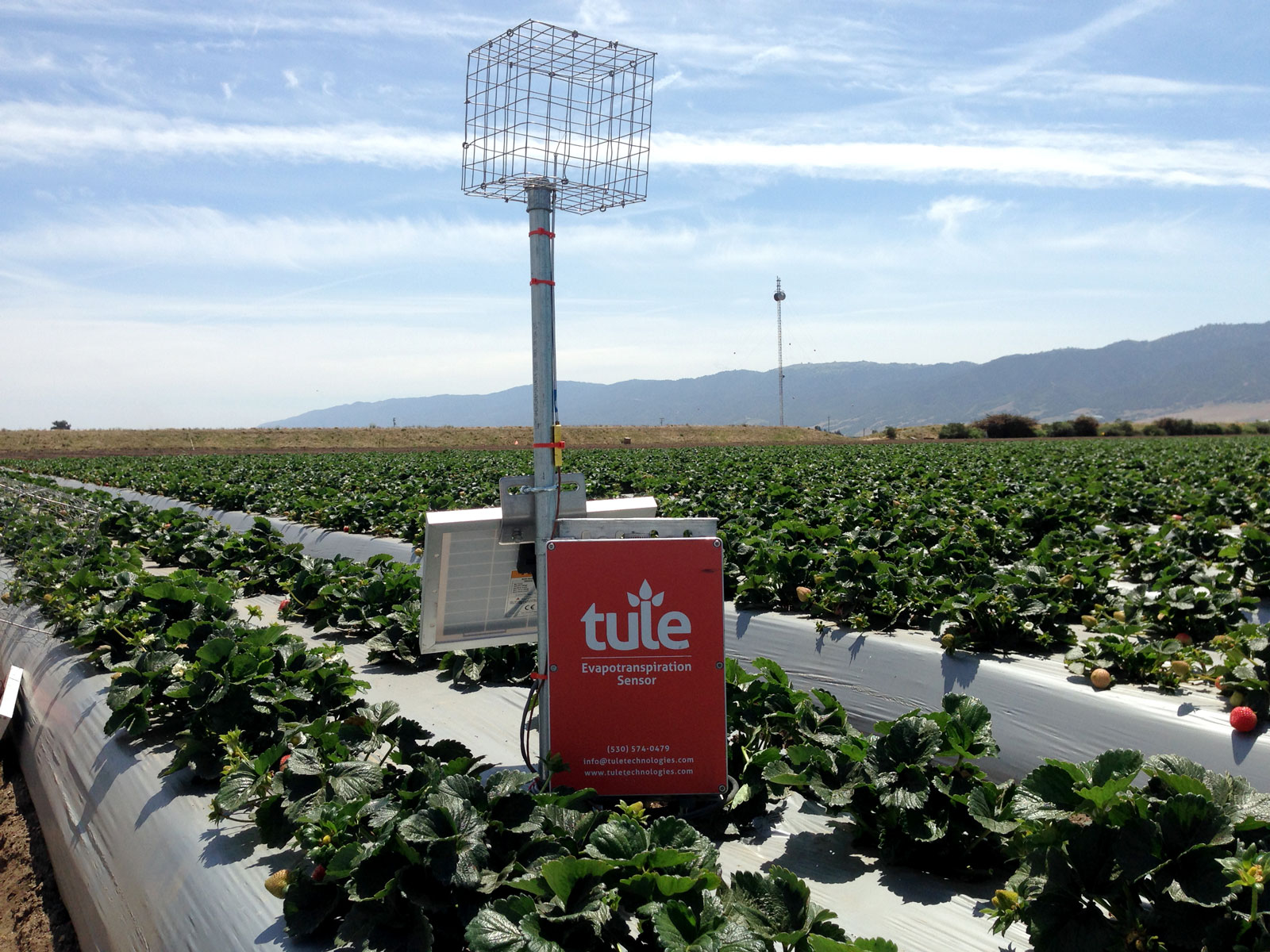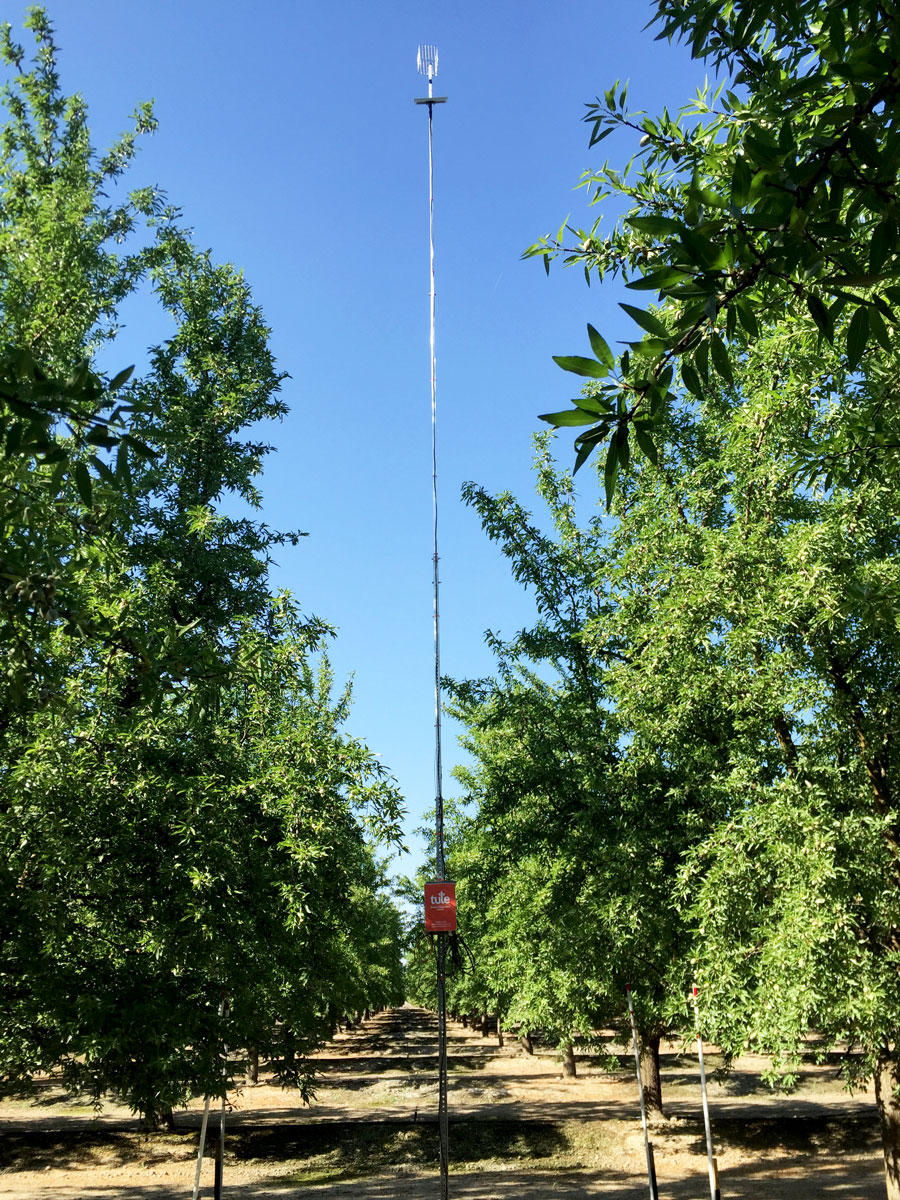Actual ET integrates the Soil-Plant-Atmosphere Continuum over a field. The Soil-Plant-Atmosphere Continuum is the movement of water from the soil, through the plant, and into the atmosphere, and eventually returned to the soil as rainfall. If the soil is not supplying enough water, the Actual ET decreases. If the plants close their stomata, the Actual ET decreases. If the air temperature cools, the Actual ET decreases.
Actual ET provides the plant water stress level, known as the Plant Response Index (PRI). The PRI normalizes for changes in the weather. A decrease in the PRI means an increase in the water stress level, and correlates with other measures of plant water stress, like leaf water potential.
Tule, on the other hand, provides the Actual ET from your field without requiring any crop coefficients or calculations. Tule reports the amount of water used by your field, your irrigation application amount, a forecast of atmospheric demand, and a recommendation for the amount of water to apply in the coming week based on your production goal.
Because CIMIS has provided Reference ET data for years, people are familiar with Reference ET. In fact, many people are so familiar with CIMIS Reference ET that they often use ‘ET’ as a shorthand term for Reference ET. At Tule, we use the term Actual ET to emphasize that we provide ET measurements for your field (Actual ET) -- not estimations for a well-watered grass field somewhere down the road (Reference ET).
After installation, we will provide you with a user login to our web dashboard for viewing the data and irrigation recommendations.
Growers also use the Actual ET data to inform when to irrigate. Actual ET and PRI decrease as the plants respond to inadequate water availability in the soil. A decrease in Actual ET and PRI tell the grower it is time to irrigate again.
Please contact us for a stepwise tutorial on how to use the data to inform you irrigation decisions.


